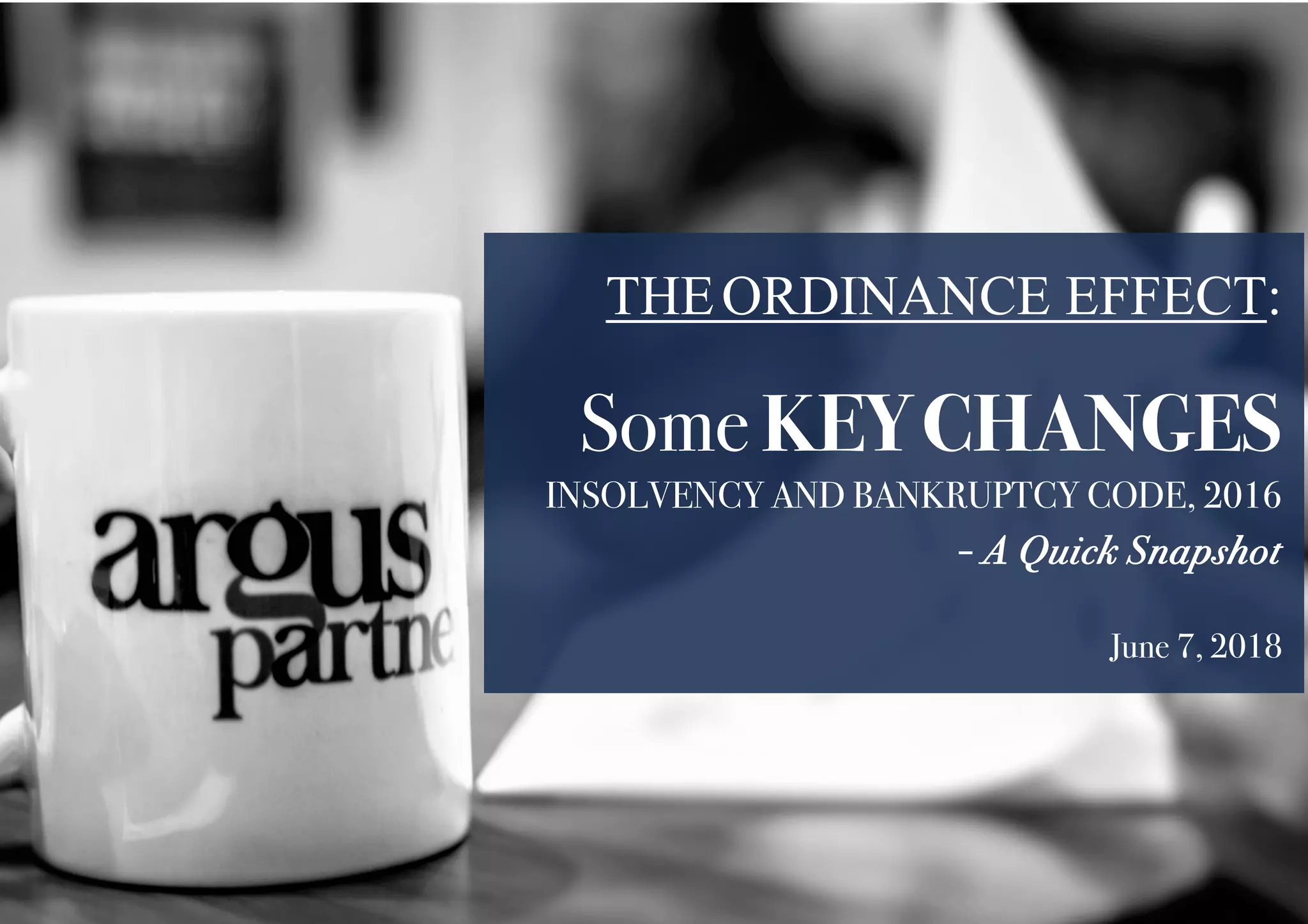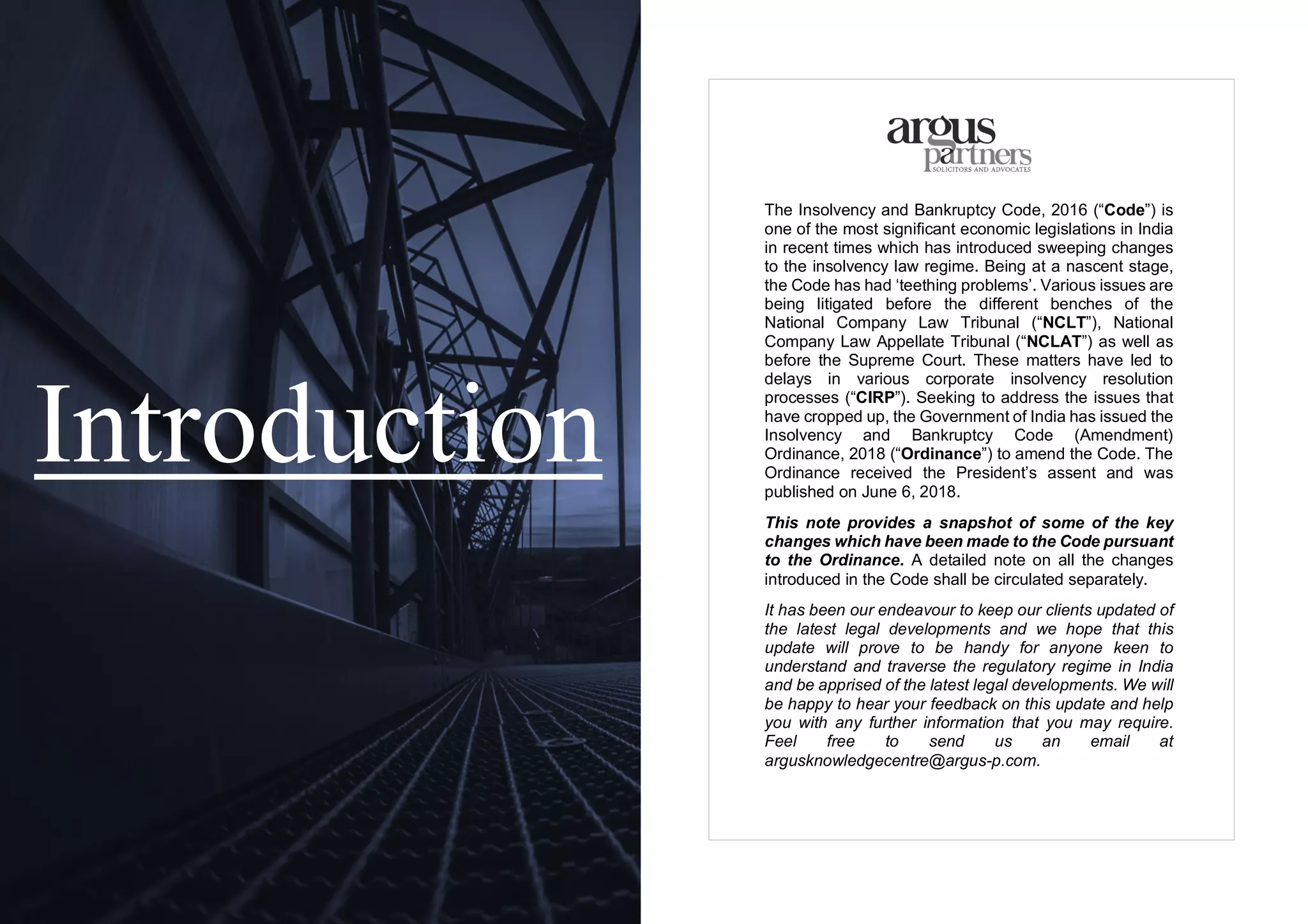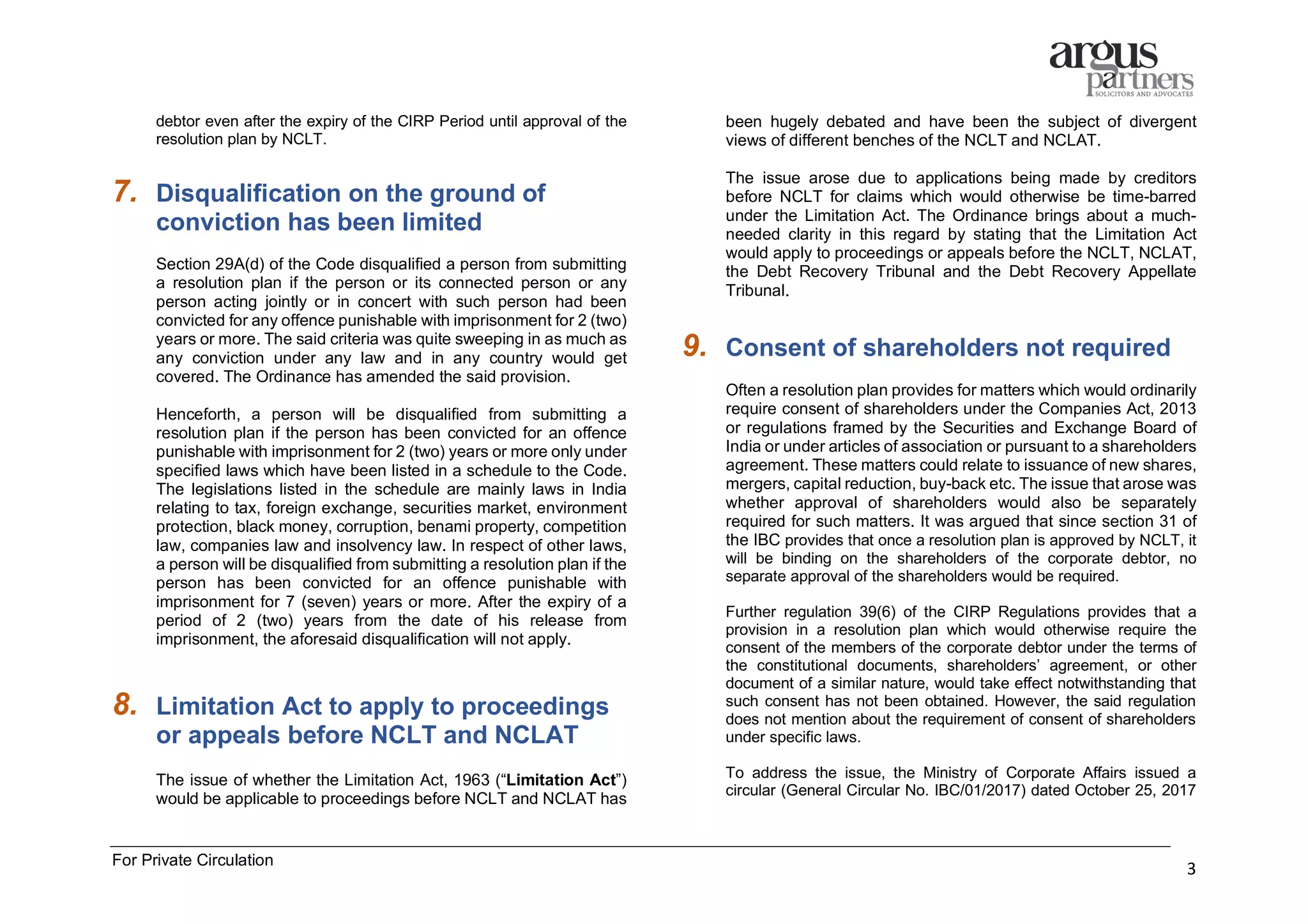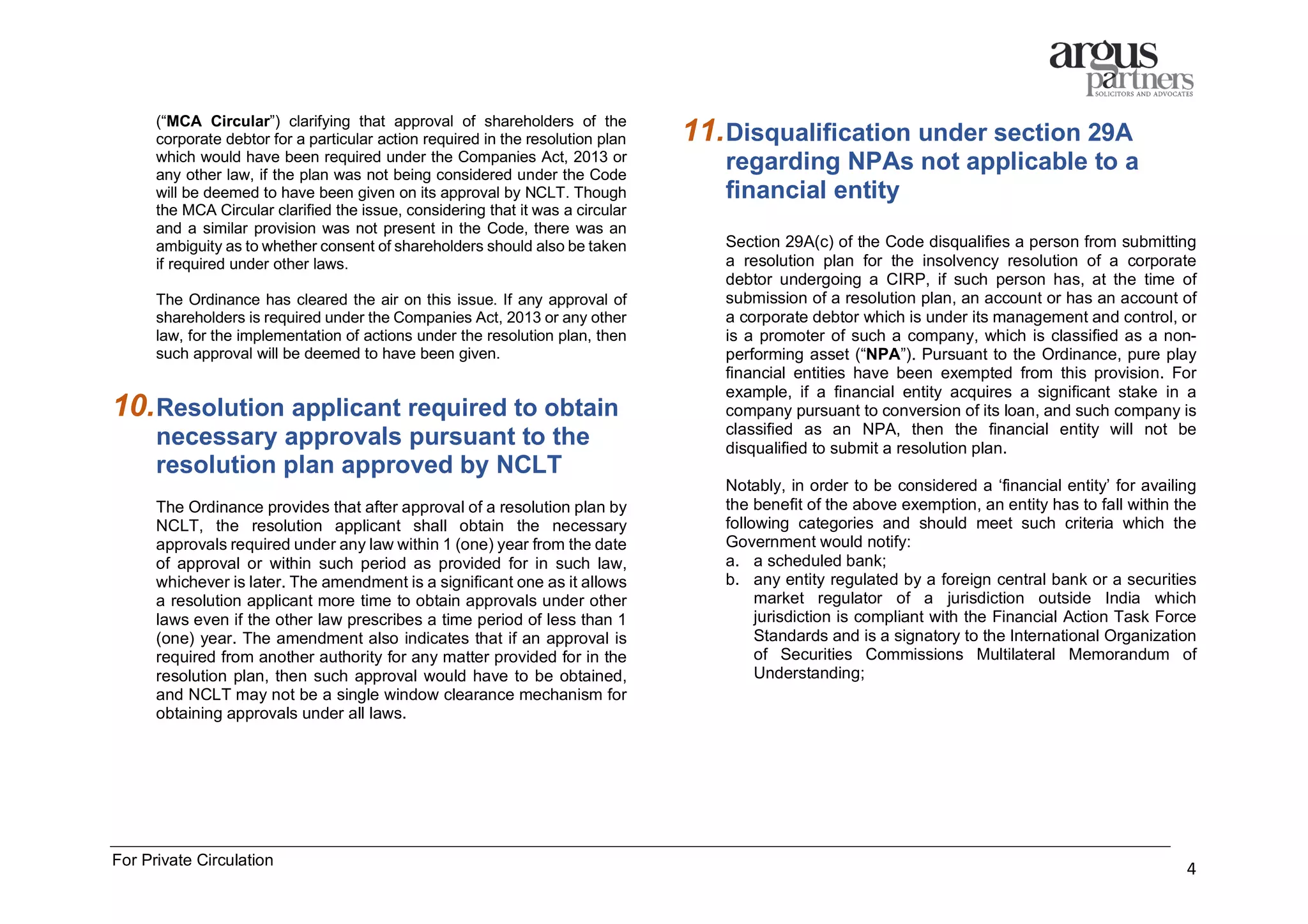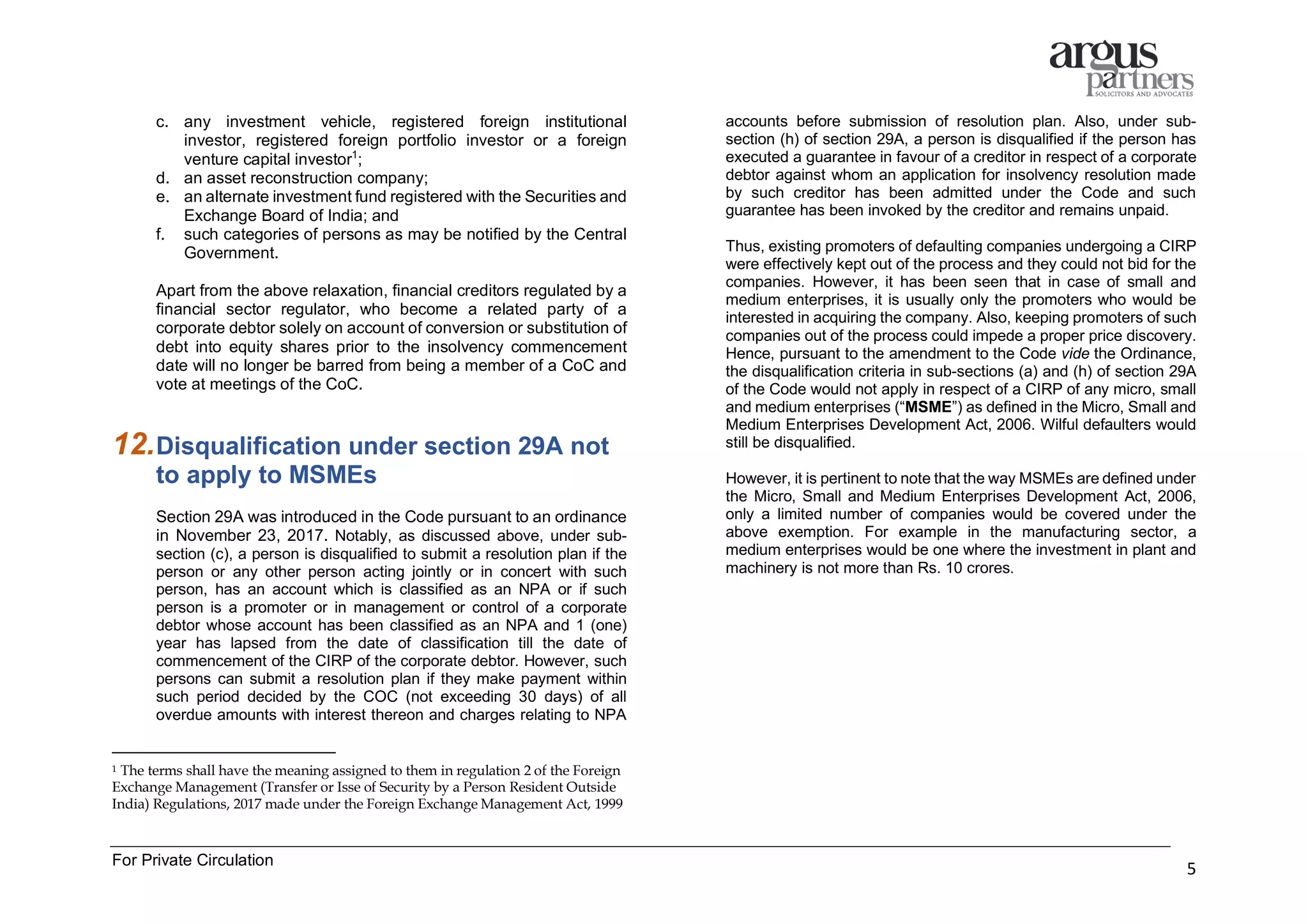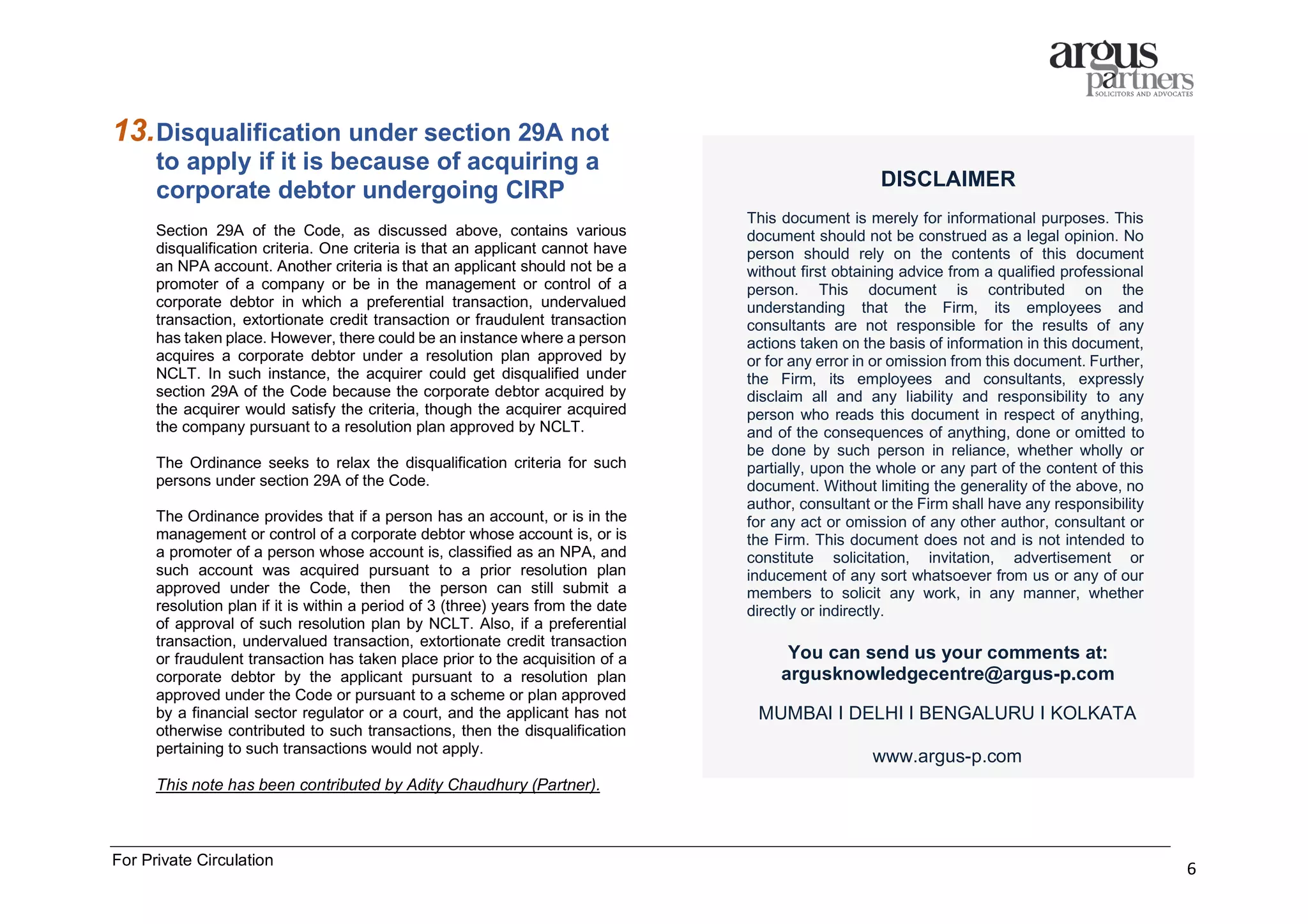The Insolvency and Bankruptcy Code (Amendment) Ordinance, 2018 introduces several key changes to the insolvency regime in India, including recognizing home-buyers as financial creditors with rights to vote and receive liquidation proceeds. It lowers the approval threshold for resolution plans from 75% to 66% and clarifies issues regarding moratorium applicability to guarantors. Additional provisions address compliance responsibilities for resolution professionals, limitations on disqualification criteria for certain parties, and the applicability of the Limitation Act to NCLT proceedings.
